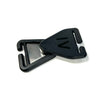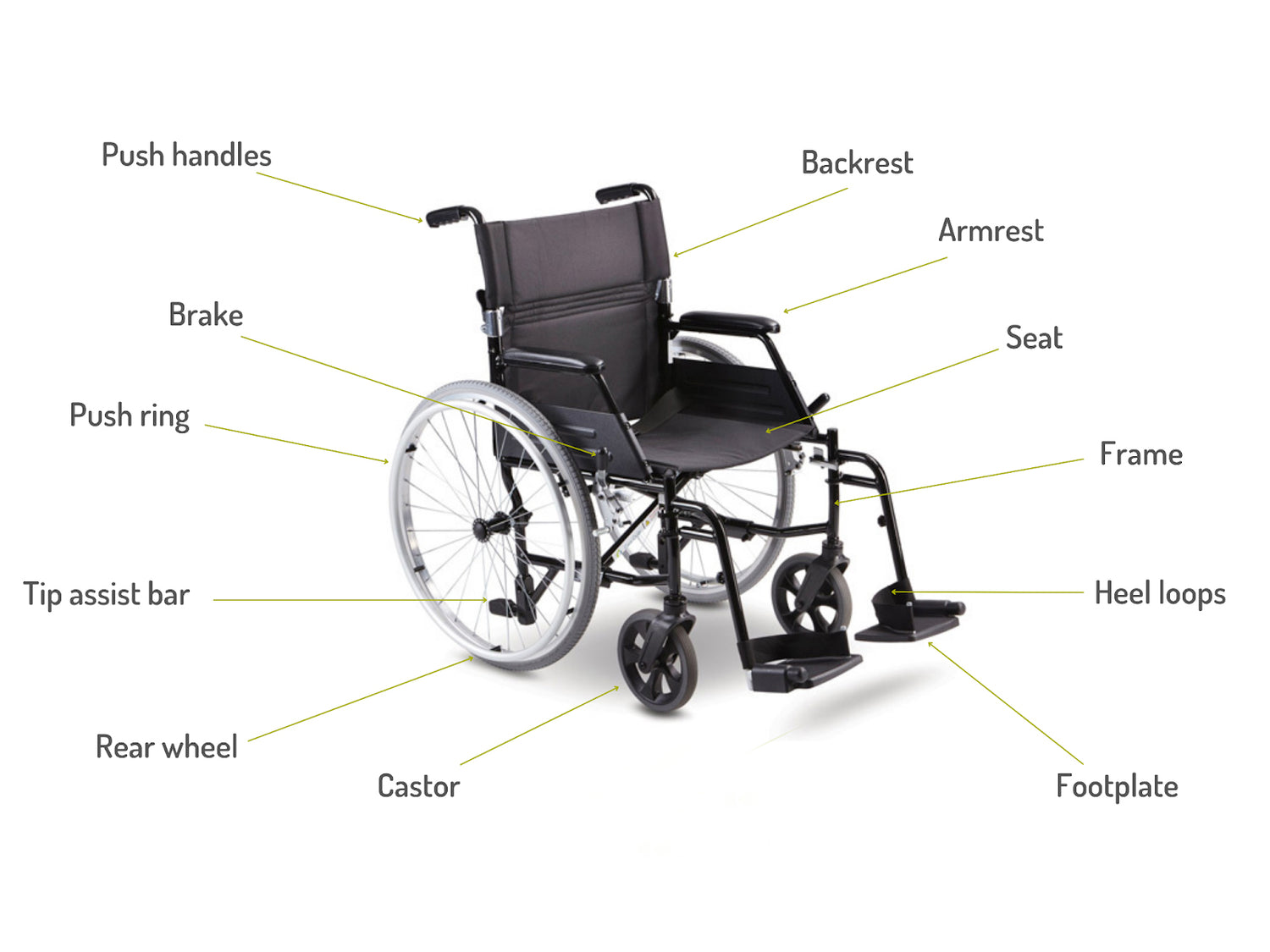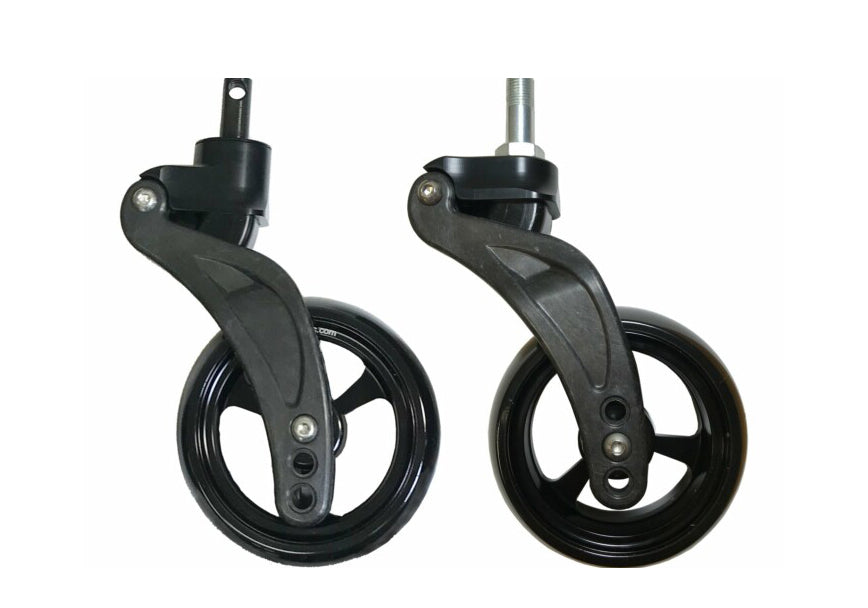Understanding the intricate details and components of a wheelchair can be a transformative experience. As with many things in life, knowledge equates to power, and in the context of wheelchair usage, it can directly translate to increased independence and mobility. In this blog, we will dive deep into wheelchair diagrams to demystify the various parts and their functions and explore how they collectively contribute to your wheelchair experience.
A wheelchair is far more than merely your seat mounted on wheels. It's a sophisticated piece of engineering thoughtfully designed to offer you comfort, support, and enhanced mobility. The primary parts of a wheelchair include the seat, backrest, footrests, armrests, wheels, and brakes. Each component is crucial in ensuring the wheelchair's functionality and optimizing comfort and convenience.
Enhancing mobility: the crucial role of wheels and brakes.
The wheels and brakes are some of the most crucial components of a wheelchair. The larger rear wheels are designed to facilitate self-propulsion, a vital aspect of getting around. On the other hand, the smaller front caster wheels are engineered to enhance manoeuvrability, enabling users to navigate tight spaces and turns with relative ease.
The brakes are an essential safety feature, ensuring the wheelchair remains stationary when required, thus preventing unwanted movement and potential accidents.
These gentlemen show you how to tighten your brakes in 5 steps - forgive their intro music we didn’t write it.
Comfort and support: the seat, backrest, footrests, and armrests.
The seat and backrest of a wheelchair are designed to provide optimum comfort during prolonged periods of use. Proper cushioning and ergonomic design can significantly help prevent pressure sores and maintain good posture, vital for the overall ride and vibe of your wheelchair experience.
The footrests and armrests play a significant role in providing support, helping maintain proper positioning and balance, thereby contributing to the user's comfort and convenience.
This little gem points out every part of the wheelchair and what to look at.
The power of adaptation: customizing your wheelchair for personal needs.
One of the critical aspects of maximizing a wheelchair's potential lies in its customisation. We all have unique needs and preferences, so wheelchairs must be customized to meet these requirements. Whether it's adjusting the seat height for better accessibility, altering the armrests for enhanced comfort, or adding innovative attachments like LapStacker, personalizing your wheelchair can drastically increase your freedom, independence, and overall quality of life.
Understanding wheelchair diagrams and the functionality of various components provides a detailed and comprehensive understanding of a wheelchair's anatomy. This knowledge empowers users to adapt to their circumstances and defy limitations - like any tool; it can be improved upon and engineered to what you need.
Remember, it's not just about the wheelchair. It's about the person using it and the life they lead. At Adaptdefy, we're committed to helping wheelchair users live a life of unbounded freedom and independence. With innovative solutions like the LapStacker® and a community of inspiring individuals, we're here to help you adapt, defy, and create a life that is uniquely yours.
If you’re new to a wheelchair, our interview with Martyn Sibley will show you what it looks like to make the world better for wheelchair users.








Leave a comment
All comments are moderated before being published.
This site is protected by hCaptcha and the hCaptcha Privacy Policy and Terms of Service apply.